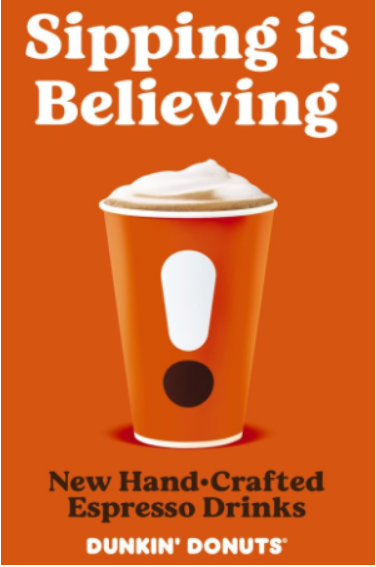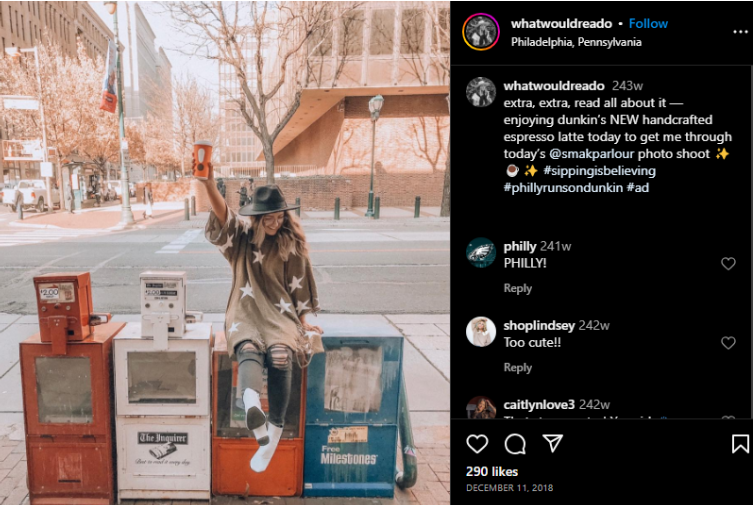The Power of Micro-Influencers- Why Smaller Can Be Better
In the age of social media, influencers reign supreme. They shape trends, drive conversations, and hold immense sway over consumer decisions. But within the influencer landscape, a new breed is rising- the micro-influencers. Often overlooked in favour of their mega-influencer counterparts, micro-influencers wield a surprising power that can be far more effective for brands.
Here are some statistics-
- According to Influencer Marketing Hub ,a staggering 57.6% of brands with ecommerce stores have embraced influencer marketing as a critical strategy. Among these brands, a majority (57%) strongly prefer collaborating with micro-influencers, particularly on Instagram.
- 47.3% of all creators are micro-influencers, the largest group among all tiers. Meanwhile, celebrities, macro-, and mega-influencers account for only 0.5-6.5% of all content creators.
- Micro-influencers charge between INR 8338-INR 41691 per Instagram post. In comparison, Macro- and mega-influencers charge a minimum of INR 416910 to upwards of INR 833820 or more for a single Instagram post.
- According to Keller Fay Group, 82% of consumers stated that they are likelier to follow a micro-influencer recommendation than more prominent influencers.
90% of surveyed marketers claim they prefer working with micro-influencers, a 10% increase from the previous year, which boasted an already impressive 80% in 2020.
What Are Micro-Influencers?
Micro-influencers are social media users with a follower count typically ranging from 10,000 to 100,000. They position themselves within a specific niche and cultivate a highly engaged community around their shared interests. Unlike mega-influencers who boast millions of followers, micro-influencers prioritize quality interactions over sheer quantity.
So, what exactly are Micro-Influencers?
Forget the millions of followers, micro-influencers are the new wave of social media stars. These individuals cultivate passionate communities around specific niches, making them ideal partners for brands seeking targeted engagement.
Why Micro-Influencers?
Engagement on Fire
Forget mega-influencers with their massive, impersonal crowds. Micro-influencers are the cozy niche shops, foster real connections with a smaller, highly engaged audience. Studies show they generate significantly higher engagement than mega-influencers- 2-5% on Instagram compared to a mere 1.7%. This translates to a much better chance of your brand message sparking meaningful conversations and conversions.
Authenticity and Trust
Forget celebrity endorsements. Consumers crave real connections. Micro-influencers, niche experts with engaged audiences, build trust through genuine content. Their recommendations feel authentic, driving higher engagement and brand loyalty. According to the Morning Consult study, 88% of people say it’s important for influencers to be authentic and genuinely care about their interests.
Cost-Effectiveness
Mega-influencers can break the bank, but micro-influencers offer a powerful and affordable alternative. Their lower fees and highly engaged audiences deliver a higher return on investment, making them ideal for budget-conscious brands.
Imagine spending less to reach a smaller, but more interested audience – that’s the magic of micro-influencers.
Targeted Reach
Instead of a generic “fitness” influencer, imagine a micro-influencer dedicated to “parkour training” or “weightlifting for women over 50.” These individuals cater to a passionate sub-demographic within the broader fitness niche. Partnering with a micro-influencer who aligns with your specific product or service ensures your message reaches the exact audience you want to convert.
This targeted approach offers several advantages-
Sub-Market Reach- Micro-influencers allow you to drill down into highly specific sub-markets within a broader niche. Imagine you’re a brand focused on vegan baking. Partnering with a micro-influencer who specializes in vegan desserts, rather than a general vegan influencer, allows you to reach a laser-focused audience with a strong interest in your product.
Multi-Market Reach- While micro-influencers provide targeted reach, you can achieve a broader impact by partnering with multiple micro-influencers catering to various sub-niches within your target market. This allows you to blanket a larger segment of your audience while still maintaining a focus on niche communities.
Finding Your Ideal Micro-Influencer
The influencer marketing landscape can be overwhelming. You’ve identified micro-influencers as the perfect partner for your brand, but how do you find the ideal one? Here’s the challenge-
- How do you know if a micro-influencer aligns with your brand values and resonates with your target audience?
- What metrics and qualities should you prioritize when assessing potential partners?
- Where do you find these elusive micro-influencers in the vast social media space?
We’ll guide you through a step-by-step process to find your perfect micro-influencer match!
Step 1- Define Your Target Audience and Brand Identity
Before diving headfirst into the search, take a step back. A clear understanding of your target audience and brand identity is crucial. Who are you trying to reach? What are their interests and demographics? What values does your brand represent? By answering these questions, you can create a profile of the ideal micro-influencer whose audience seamlessly overlaps with yours.
Step 2- Decide on Your Platform
Where does your target audience spend their time online? Identify the social media platforms (Instagram, YouTube, Linkedin) most relevant to your campaign and focus your search there.
Discover-
- Utilize relevant hashtags within your niche. Explore content tagged with these hashtags to discover micro-influencers actively engaging in conversations.
- Leverage the built-in search functionalities of your chosen platforms. Search for keywords and phrases related to your niche to find relevant content and micro-influencers.
- See who your competitors are partnering with. Analyze their micro-influencer choices to learn from their strategies and identify potential partners who might align with your brand as well.
Sounds like too much work? Well Celebfarm’s advanced search filters are your secret weapon. Search for micro-influencers based on demographics, interests, engagement rates, and even platform-specific metrics. This streamlines your search and saves you time.
Analyze-
Engagement Rate- Look beyond follower count. Prioritize micro-influencers with high engagement rates, such as comment-to-follower ratios. This indicates a strong and active community genuinely interested in their content.
Content Quality- The micro-influencer’s content should be high-quality and visually appealing. Does their aesthetic align with your brand image? Are their posts informative and engaging? Look for micro-influencers who consistently create content within your niche.
Authenticity- Engagement and content quality are important, but authenticity is paramount. Does the micro-influencer feel like a genuine person their audience connects with? Do their endorsements feel organic and believable? Look for individuals who are passionate about your niche and whose content reflects their genuine personality.
If you are one of the cool ones and using Celebfarm then our influencer profiles provide in-depth analytics such as engagement rates, audience demographics, and brand affinity scores. This data allows you to make data-driven decisions when selecting your ideal partner.
Step 3- Shortlist and Prioritize
After gathering potential partners, shortlist a select few based on their fit with your brand and campaign goals. For shortlisted influencers, consider a deeper dive. Engage with their content, leaving thoughtful comments and gauging audience interaction. This provides a more nuanced view of their engagement and community.
Step 4- Outreach
Found those perfect matches? Now it’s time to introduce yourself and make relationships with the creators. First things first:
Personalized Messages- Avoid generic messages. Take the time to understand their content and tailor your message accordingly. Highlight what excites you about their work and how they can contribute to your campaign.
Mutual Benefit- Present your partnership as an opportunity for mutual benefit. Discuss content ideas and ensure creative freedom to maintain authenticity. Transparency is key, so be upfront about expectations and compensation structure.
Long-Term Vision- Consider long-term partnerships over one-off campaigns. Building relationships with micro-influencers fosters trust and can lead to more impactful collaborations.
Outreach is usually the most time taking, you can leverage celebfarm’s built-in tools to invite, communicate and hire your trend setter.
Step 5- Negotiate and Contract
Once you’ve identified your ideal partner, negotiate the terms of the collaboration. Clearly outline deliverables, timelines, and compensation in a written contract.
Step 6- Campaign Management
Once the partnership is established, manage the campaign effectively. Provide clear communication, offer support, and ensure both parties are aligned on goals.
Step 7- Track and Measure Results
Throughout the campaign, track key metrics such as engagement, reach, and conversions. Analyze the data to understand the campaign’s effectiveness and measure the influencer’s impact.
The Final Step- Refine and Repeat
After the campaign concludes, analyze the results and identify areas for improvement. Did the influencer you chose resonate well with your target audience? Did the content align with your brand messaging?
Celebfarm allows you to manage influencer relationships within the platform. Store campaign data, track communication history, and facilitate ongoing collaboration with successful micro-influencers.
Case Study- Dunkin’ Donuts Runs on Micro-Influencers
Dunkin’ Donuts, the iconic coffee and donut chain, provides a compelling case study for the effectiveness of micro-influencer marketing. Facing increased competition and a need to connect with younger demographics, Dunkin’ shifted its focus from traditional advertising to a social media-centric approach heavily reliant on micro-influencers.

The Challenge
Dunkin’ Donuts faced a challenge- connect with younger coffee drinkers. Their solution? Micro-influencers. Local social media stars (10k-50k followers) showcased Dunkin’s coffee through authentic content, sparking engagement and a sales increase of over $300 million. Dunkin’ proves micro-influencers, not celebrities, can deliver a powerful marketing punch.
These influencers, with usernames like @josheatsphilly, @_kdevinney, and @rievictoriaaoki, boasted followings that, at first glance, might seem modest compared to celebrities or social media giants. However, Dunkin’ recognized the hidden gem within this seemingly limited reach. They understood that micro-influencers offered a more intimate and personal connection with their target audience, a crucial factor in today’s marketing landscape.

Conclusion
The influencer landscape is constantly evolving, but one thing remains clear: authenticity and targeted engagement reign supreme. Micro-influencers, with their niche expertise, passionate communities, and genuine connections, offer a powerful tool for brands seeking to connect with their target audience in a meaningful way. By leveraging the power of micro-influencers, you can build brand trust, drive conversions, and achieve lasting success in today’s competitive social media landscape. So, don’t underestimate the power of the “micro” they might just be the secret weapon your brand needs.




